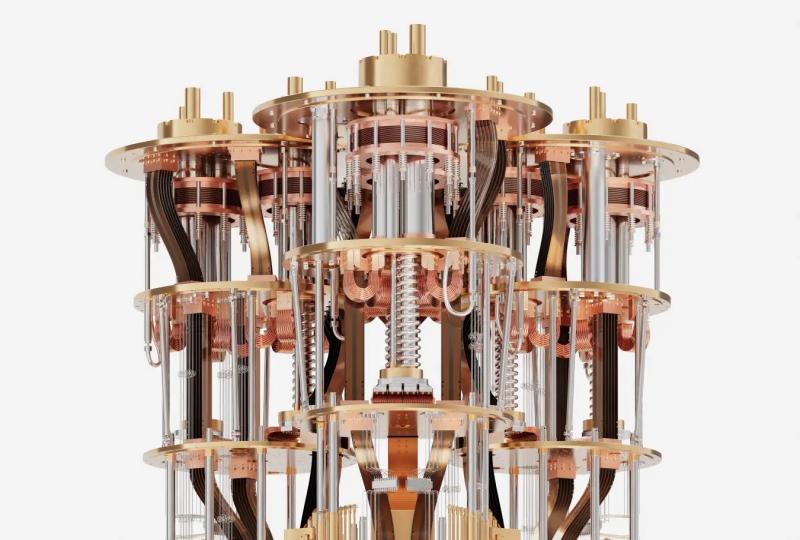Quantum Variational Formula Explained with Examples
2025.04.18 · Blog
The quantum variational formula lies at the heart of many hybrid quantum-classical algorithms that bridge today's noisy quantum hardware and practical problem-solving. By using classical optimization to guide quantum evolution, the variational approach unlocks real-world applications in quantum chemistry, materials science, and machine learning.
This article dives deep into the quantum variational formula, its mathematical foundation, algorithmic implementation, and future impact.
What Is the Quantum Variational Formula?
In essence, the quantum variational formula is a principle of approximation: it states that the lowest eigenvalue of a Hermitian operator (typically a Hamiltonian) is less than or equal to the expectation value of that operator to any quantum state.
Formally:

Where:

This forms the basis of the Variational Principle in quantum mechanics and is used to approximate ground states by minimizing the expectation value to θ
Why Quantum Variational Formula Matters in Quantum Computing
The quantum variational formula is the core theoretical engine behind Variational Quantum Algorithms (VQAs), such as:
-
Variational Quantum Eigensolver (VQE)
-
Quantum Approximate Optimization Algorithm (QAOA)
-
Variational Quantum Classifier (VQC)
These algorithms:
-
Are suitable for Noisy Intermediate-Scale Quantum (NISQ) devices.
-
Use classical optimizers to iteratively tune a parameterized quantum circuit.
-
Are flexible enough to target a wide range of quantum problems, including molecular simulations, optimization, and machine learning tasks.
How Quantum Variational Formula Works: Step-by-Step
1. Choose a Hamiltonian H
Usually derived from a problem (e.g., electronic structure of a molecule in chemistry).
2. Select an Ansatz ∣ψ(θ)⟩
This is a parameterized quantum circuit (e.g., UCCSD, hardware-efficient, or problem-inspired).
3. Evaluate the Expectation Value
Run the quantum circuit to compute ⟨ψ(θ)∣H∣ψ(θ)⟩ via repeated measurements.
4. Minimize Classically
Use classical optimization (e.g., COBYLA, SPSA, Adam) to adjust θ and minimize the expectation.
Applications of the Quantum Variational Formula
Quantum Chemistry
-
Find ground-state energies of molecules.
-
Predict chemical reactions and molecular bonding.
-
Simulate strongly correlated systems beyond classical reach.
Materials Science
-
Understand phase transitions in quantum systems.
-
Model low-energy spectra of solids.
Machine Learning
-
Optimize quantum classifiers with variational circuits.
-
Implement quantum neural networks and feature maps.
Optimization
-
Solve combinatorial problems like Max-Cut, TSP, portfolio optimization using QAOA variants.
Current Challenges of the Quantum Variational Formula
-
Ansatz design: Choosing circuits expressive enough yet hardware-efficient.
-
Barren plateaus: Gradients vanish in high-dimensional landscapes, slowing learning.
-
Hardware noise: Quantum decoherence can affect the fidelity of expectation values.
-
Scalability: Classical optimization becomes expensive as qubit count increases.
Future Directions of the Quantum Variational Formula
-
Adaptive ansätze like ADAPT-VQE to reduce circuit depth dynamically.
-
Noise-aware optimization techniques tailored for real devices.
-
Hardware-algorithm co-design: Tightly integrating variational methods with specific quantum architectures.
-
Quantum-aware machine learning: Embedding variational models into deep quantum pipelines.
Conclusion
The quantum variational formula isn't just a theoretical principle—it's a practical foundation powering some of the most promising quantum algorithms today. By enabling the collaboration between quantum and classical computing, it bridges the gap between NISQ devices and real-world applications.
As quantum hardware matures, the variational framework will evolve from approximation to precision science, shaping the future of computation, chemistry, and artificial intelligence.
Featured Content






